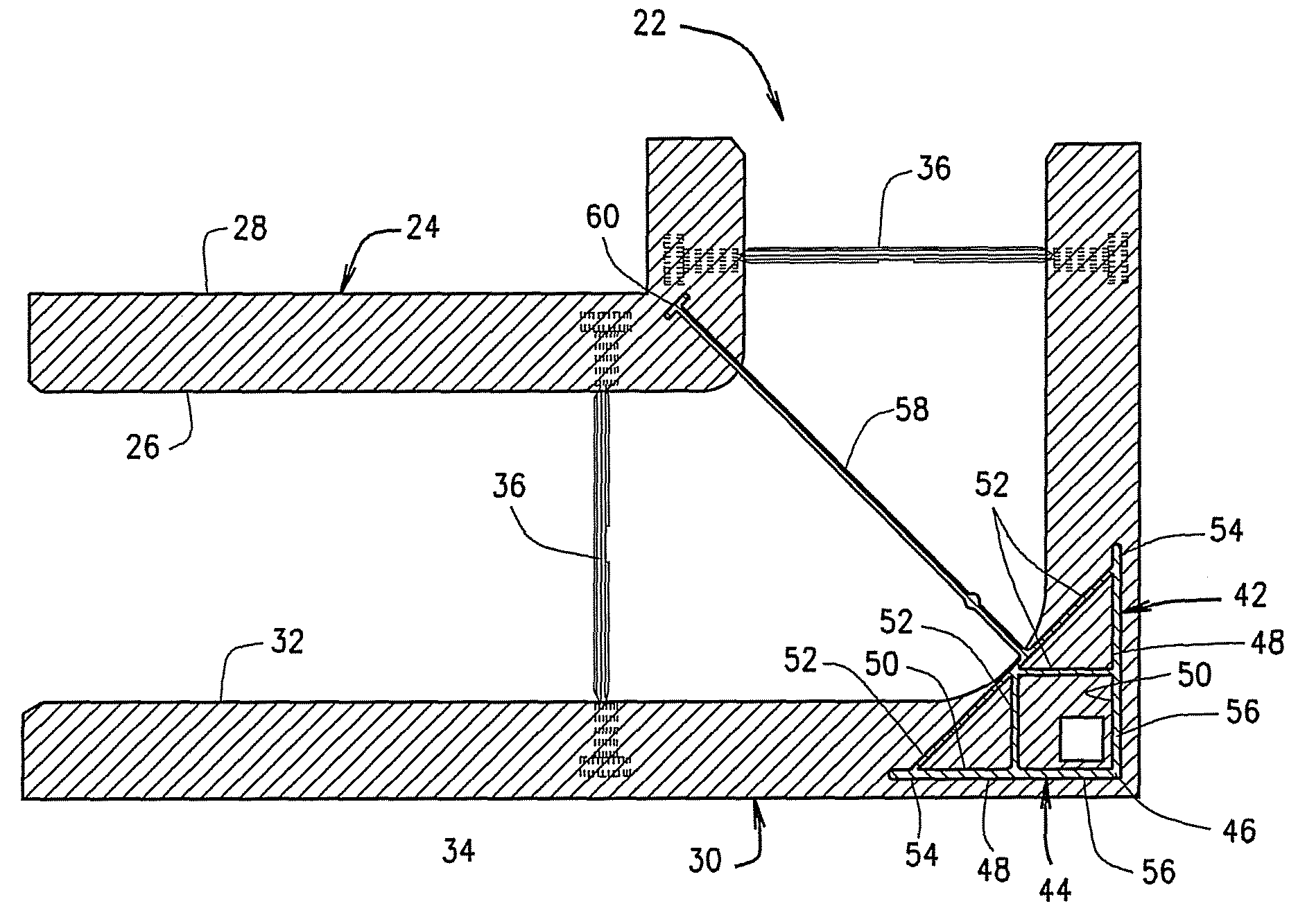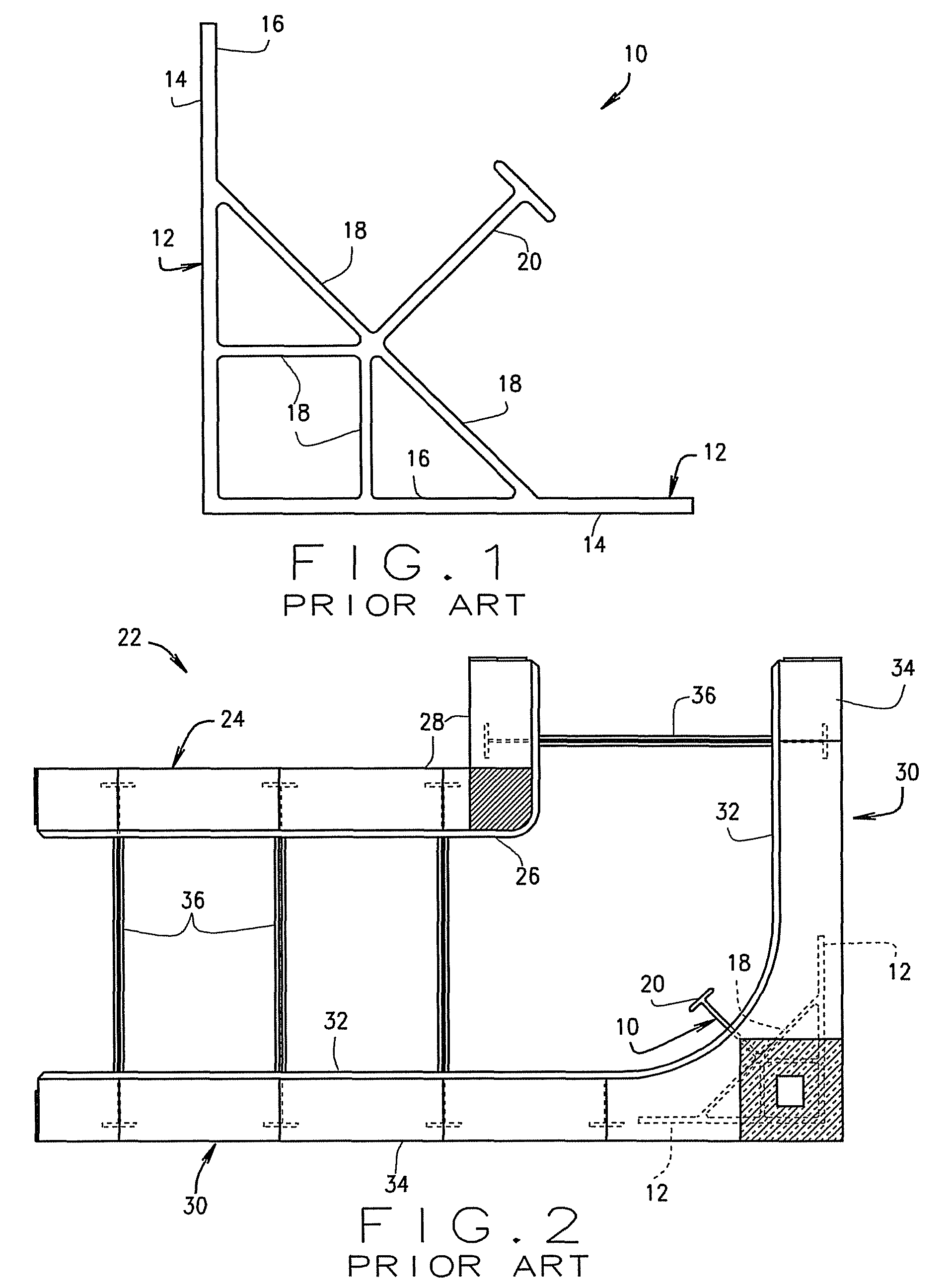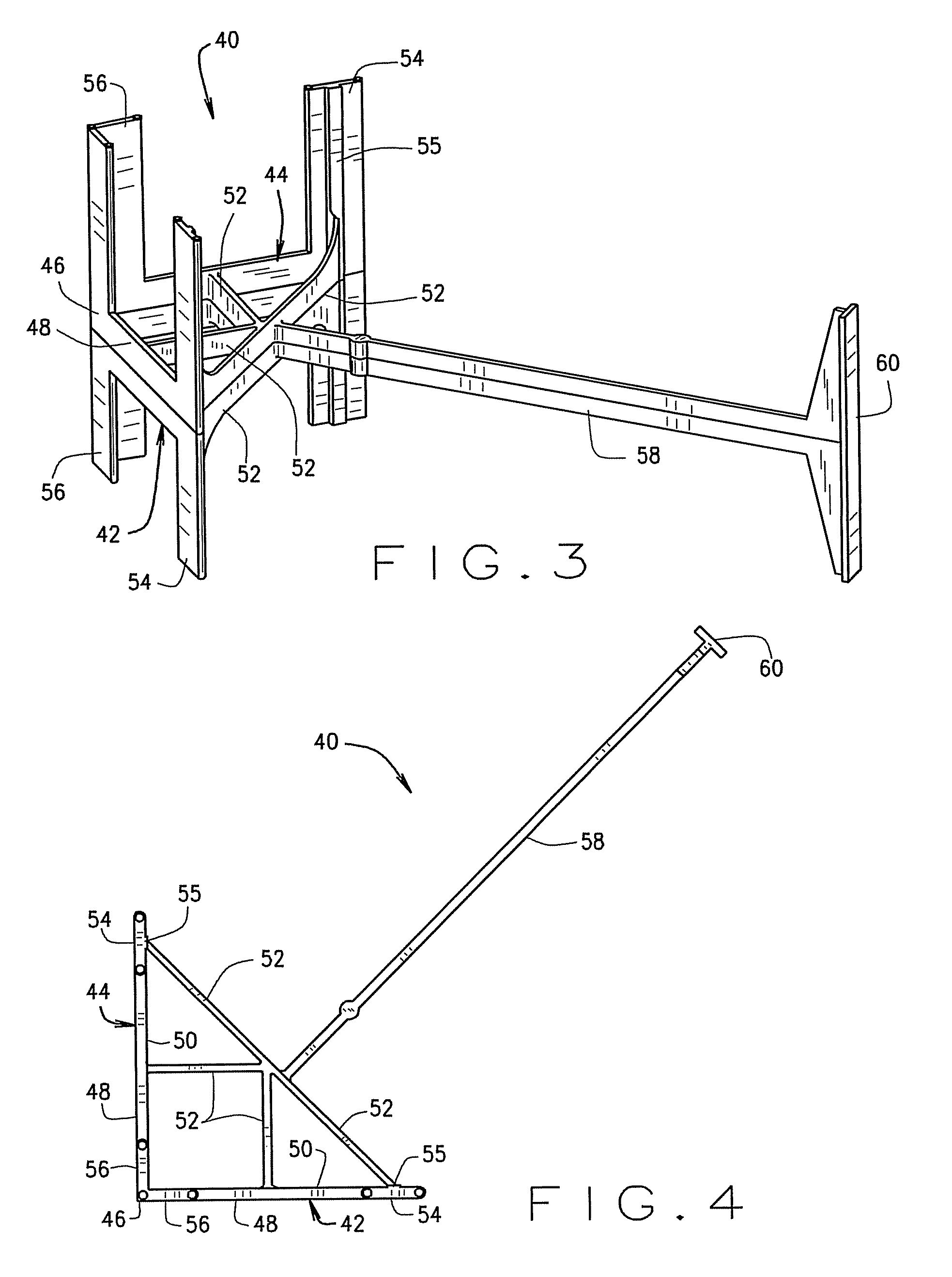Corner tie bracket for use with insulated concrete form systems
a technology of insulated concrete and corner tie brackets, which is applied in the direction of walls, building components, pillars, etc., can solve the problems of not providing sufficient surface area and/or spacing for proper flanges, blowing out of corner foam panels, etc., and achieves the effect of improving the structural load carrying capacity of the corner tie bracket, increasing the flexibility of attachment options, and increasing the number of attachment options
- Summary
- Abstract
- Description
- Claims
- Application Information
AI Technical Summary
Benefits of technology
Problems solved by technology
Method used
Image
Examples
Embodiment Construction
[0017]FIG. 1 illustrates a typical prior art corner tie bracket 10 having a pair of flange members 12 sharing a common end and extending perpendicularly from each other, each flange member 12 having an outer surface 14 and an inner surface 16. An array of web members 18 connects the inner surfaces 16 of each flange 12. A concrete engaging member 20 extends inwardly from the web 18 at substantially a 45° angle from either flange 12.
[0018]A typical corner ICF block 22 is illustrated in FIG. 2 and includes an inner corner panel 24 having an inner surface 26 and an outer surface 28, an outer corner panel 30 having an inner surface 32 and an outer surface 34, and a plurality of conventional ties 36 having opposed flange portions encapsulated within a respective panel 24 and 30, thereby holding and retaining the corner panels 24 and 30 in opposing fashion. The corner block 22 may include any type of engaging means formed along respective opposed longitudinal and vertical edges for removab...
PUM
 Login to View More
Login to View More Abstract
Description
Claims
Application Information
 Login to View More
Login to View More - R&D
- Intellectual Property
- Life Sciences
- Materials
- Tech Scout
- Unparalleled Data Quality
- Higher Quality Content
- 60% Fewer Hallucinations
Browse by: Latest US Patents, China's latest patents, Technical Efficacy Thesaurus, Application Domain, Technology Topic, Popular Technical Reports.
© 2025 PatSnap. All rights reserved.Legal|Privacy policy|Modern Slavery Act Transparency Statement|Sitemap|About US| Contact US: help@patsnap.com



